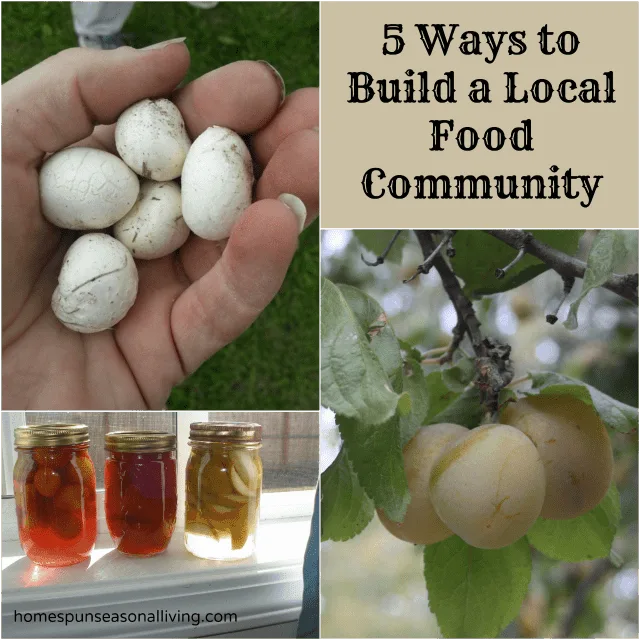Years ago, I read the book, Coming Home to Eat by Gary Paul Nabhan. It dramatically changed how I look at food and my local community. The book created in me a huge desire to create a community of local food enthusiasts. In the years since, I’ve worked at creating a local food community. It’s not perfect and it’s still growing but it’s most definitely been a worthy investment of time and effort. If you’re looking to decrease your dependence on the grocery store while also supporting your neighbors, eating local food, and saving on your monthly food budget then try your hand at these 5 Steps to Build a Local Food Community.
1. Talk to Your Local Farmers
Go to the farmer’s market, attend open farm days, volunteer. Get to know your local farmers. Talk to them, they generally love to talk about what they’re doing and they are a wealth of information. They are your first line not only to local food but to other folks interested in local food. They generally know and work with other farmers, producers, and community members and can help you get in touch with these people.
2. Take Notice of Your Food Shed
When walking around your neighborhood or community take notice of what’s growing. Are there fruit trees being neglected? Does a neighbor have a huge rhubarb patch? Be willing to knock on the door and ask for the plums from that neglected tree. Ask for some extra rhubarb, etc. Don’t just take either, offer as well. Offer to trade some of the finished product from whatever you take, some homemade jam for the plums might be more than welcome. Be respectful when harvesting, treat the property and plants as you would your own.
3. Forage for Wild Edibles
Take care here, be sure you properly identify every plant before consuming it. When in doubt leave it be! Find a good berry book for your general geographic location, go picking with someone knowledgeable. Take a class on mushrooms or wild edibles and learn how to add these free and local foods to your meals and preservation efforts this way.
4. Use Social Media to Barter
If you’re on Facebook, check for listings in your geographic area for gardeners, yard sale swaps, even food swapping. These groups often share, trade, and sell produce, plants, eggs, animals, baked goods, kefir grains and more amongst members. It’s a great way to trade extras and learn more about your area. These people may already be the foundation of your local food community.
5. Place Ads
Advertise on Craigslist or other local venues. Place ads asking to pick extra fruit or nuts, again offering to trade extra jam, etc. If you’re having trouble finding someone to help you learn about wild edibles, run an ad seeking a teacher. You might be surprised what turns up. Use a free service so that your ads don’t cost anything just in case the results are underwhelming. Still use the internet to your benefit even when building a local food community.
While many of these ways focus on finding the food itself, it is the interactions with the people around the food that will eventually build the community. Keep the doors open for new things and the community will build quietly and slowly overtime.
What would you add to this? How are you building your local food community?
[sc:Useadsenselarge ]
